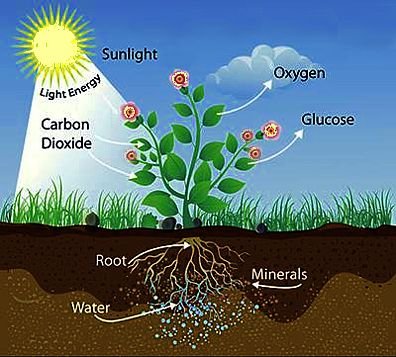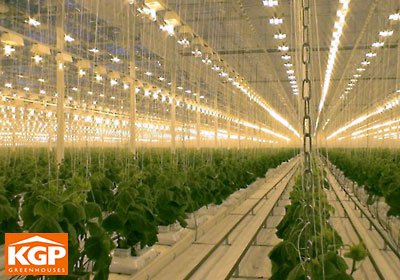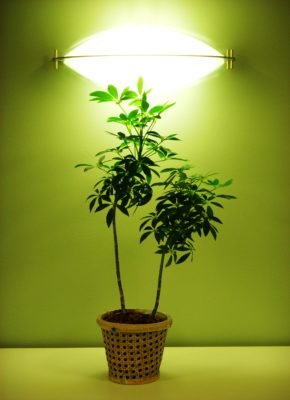How do plants get their food?
Hello steemians friends, in this opportunity I want to explain to you about the importance of light for plants; sunlight, as well as artificial light, is used by the plant to obtain the food for its growth and development during its biological cycle. But how do plants get their food?
How do plants get their food?
Plants are living beings Autotrophs, that is, they are capable of producing their own food from inorganic substances such as light, water, and some nutrients from the earth; But for the plant to obtain this energy, it is necessary that a process called Photosynthesis or the synthesis of light be carried out. Photo which means "Light" and synthesis which means "to gather", and is defined as the process by which the food is synthesized, using the energy of light.

Source
Process of photosynthesis in plants
The plants through the green pigment that contain their leaves, called chlorophyll that are in the chloroplasts, capture the energy of sunlight, which through a series of chemical reactions, this energy is used to combine soil water with carbon dioxide from the air; One of the products of these chemical reactions is the food of plants, called glucose.
Glucose can be broken down to release energy, since cells need energy for their vital functions. In addition to glucose can form other substances that the plant uses to grow, some of these substances are also stored in some areas of the roots and stems.
The other product of photosynthesis is the oxygen, which is important for us and practically for all living beings on Earth.

Source
As we have pointed out previously, light is an important factor for plants to carry out photosynthesis, so that they can elaborate their own food and their biological cycles. For this reason, plants should be grown in appropriate environments, taking into account the quality, duration and intensity of the light they receive; regardless of whether they are grown in greenhouses, in the home or in the open field, but the important thing is that the plants receive the necessary light according to the species. There are plants that develop in short days, neutral days and long days; that is why it is necessary to know the types of plants that we are going to cultivate.

Source
Long days: In this period the plants grow during long days, they bloom when the duration of the day is longer than the night. They flower from the last days of spring until the beginning of summer. When the duration of the day is shorter than the critical moment, the plants stop the flowering and pass to the vegetative growth.
Neutral days: the plants that grow in this period bloom independently of the duration of the day, that is, they are not based on photojournalism. Instead, they usually bloom after reaching a certain stage of development: examples include: celery, cucumbers, peppers, tomatoes, etc.
Effects of lack or excess of light on the plants
As we already know, light is a fundamental element for plants, However, not all plants need the same light; there are plants that require more or less light than others, so it is important to ensure that the plants that are cultivated receive the hours of light according to their species.
Excess light in the plants:
An excess of light in your plants can cause them to not develop normally. An excess of light can cause the leaves to lose their green tone and turn whitish, with brown edges and brown spots.
On the other hand, the size of the copy is reduced, sometimes it wrinkles and can even be burned. As a consequence, the plant will tend to grow towards the opposite side to that from which it receives light.
Example: The cultivation of the lettuce prefers the temperate climates, with an optimal temperature of between 15º and 18º C. If it is cultivated in hot climates with temperatures higher than 30 ºC, the plant will not develop its foliage, presenting burns on its leaves.
Lack of light in the plants:
If the plant receives less light than required, it will develop weak, also with yellowish leaves, thin stems, flowers will be very small and if it is vegetables, will not produce fruit.
Example: A tomato plant requires a minimum of 7 hours of sunlight, if this plant is placed in a shady environment, or in those cases that are grown indoors, it will certainly not produce fruit and if it is produced it will be few and small.
Recommendations for your plants receive the right light
- The first thing is to know the amount of light hours that your plant will require.
- You must ensure that the plant receives adequate light.
- It is important that the light reaches all parts equally.
- In case you decide to grow your plants in greenhouses, calculate the intensity of sunlight and place the appropriate shade mesh; in the same way the intensity of the light is calculated, in those cases where artificial light is going to be used.

Source
- You can also place lamps to your cultivated plants inside your home.

Source
Posted from my blog with SteemPress : http://oscarcede.vornix.blog/?p=110
We @farms find this post of great important to this community and also to newbies...... am sure that by now we would be able to tell how plant grow
Resteem